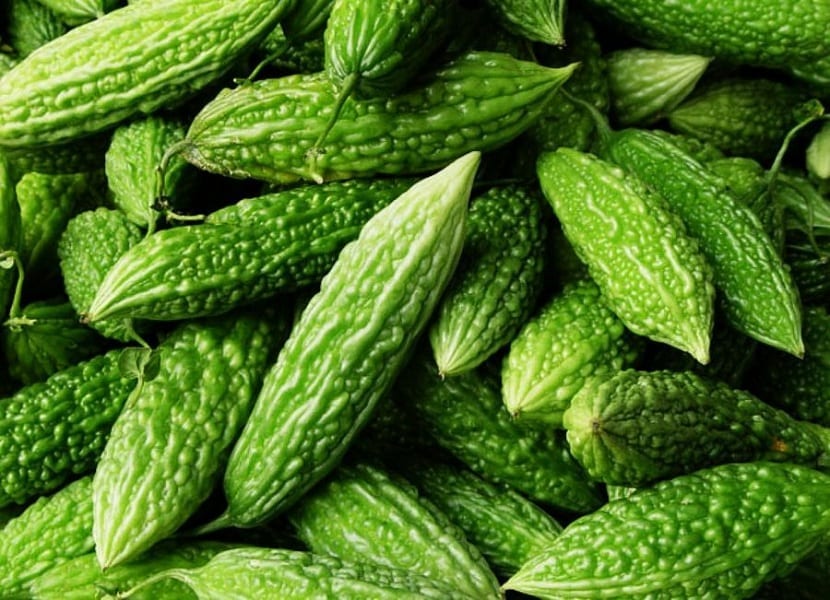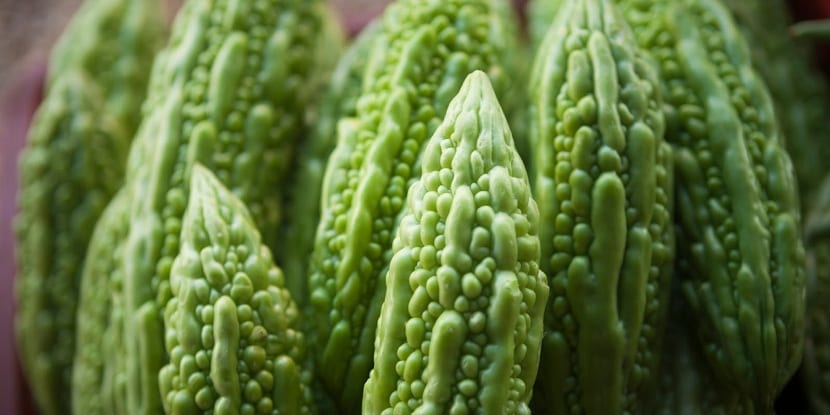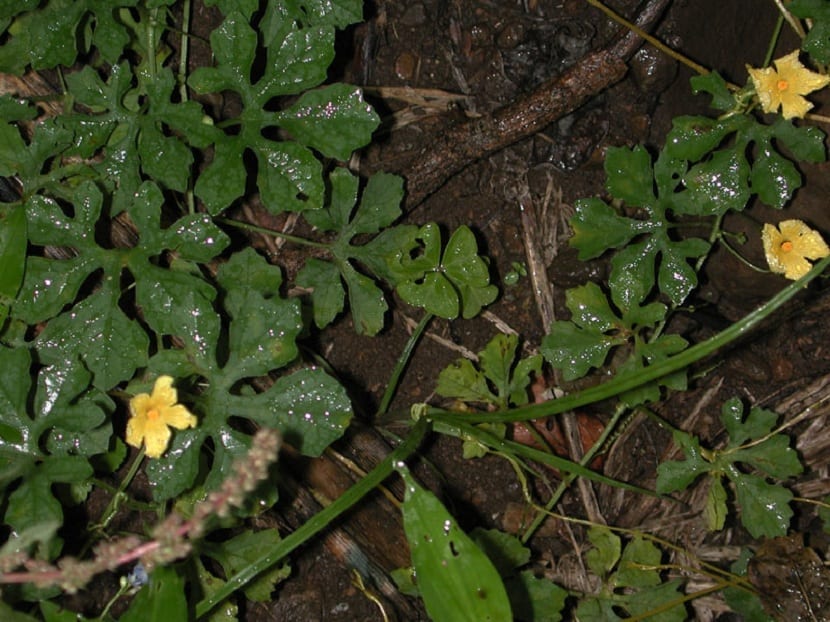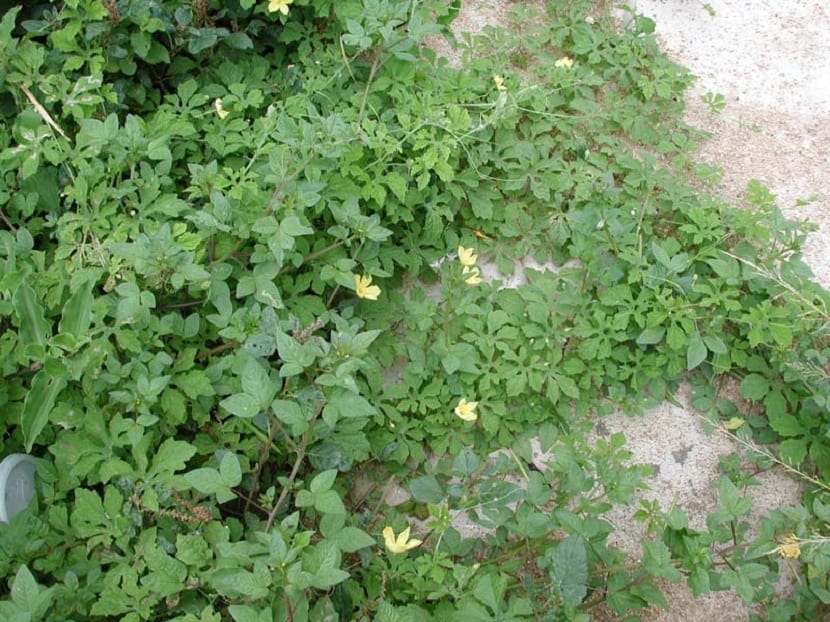
The bitter melon It is a variety of the Cucurbitaceae family that originates from the old world. It has 45 species in Africa and 5 in Asia. Its scientific name is Momordica and it is known by other common names such as cundeamor, balsam, catajera and ampalayá. In this article we are going to talk about everything related to this fruit. From its main characteristics to how it is grown.
Do you want to know more about it? You just have to keep reading 🙂
Key features

We are talking about a type of monoecious and herbaceous plant that grows annually. It is a climber and does not reach more than 5 meters in height. It has quite long and branched stems to be able to climb the places where it needs it. It is usually spread out more in places where those that need more light or humidity. It is a way to survive and expand in a more efficient way. The stems have tendrils.
As for its leaves, they are of the simple type and it has small beautiful ones. They are lobed-patted in shape with up to 7 velvety lobes. The margins of the leaves are usually serrated and have a dark green color. The dimensions of the adult leaves are between 3 and 8 cm long.
The flowers are yellow and have a corolla with 5 petals. Next to the petals we can see a large bract. To differentiate between male and female flowers we look at the stamens. Male flowers have 3 stamens and also appear solitary.. They can form small groups on a small thin peduncle. The sepals are shorter in length and pubescent.
On the other hand, female flowers have an inferior ovary with three stigmas. They always appear solitary and with linear sepals. The fruit is a fleshy speridium with an ovoid shape and a length that ranges from 3 to 6 cm. Below this fruit we can find a golden yellow or orange and shiny petiole.
When sowing bitter melon, we can do so with its unmistakable red, oblong seeds measuring 12 mm in length and 6 mm in width.
Requirements for its cultivation

This plant requires various environmental conditions that we are going to mention one by one to analyze them well. The necessary climate for it to grow is the tropical or subtropical where it is able to adapt perfectly and be cultivated throughout the year.
The first requirement is that of a soil that has good aeration and drainage with loamy soil, both sandy and clayey. Ideally, even if the soil texture is wetter, it should have good aeration and drainage (see The types of soils). Clay soils are those that are subject to some limitations due to lack of aeration. This makes the roots unable to fully develop. What should not be allowed is waterlogging, since it would kill the plant in a short time.
Regarding alkalinity, can tolerate pH levels between 5,5 and 7,5. The optimum is between 6 and 7. They are quite demanding in terms of soil nutrient conditions. It is best to have soils rich in humus.
The second requirement is temperature. This belongs to the weather. We have mentioned before that it needs a tropical and subtropical climate where temperatures are hovering between 25 and 30 degrees. In this way we will be favoring the germination and growth range. Temperatures that continually drop below 25 degrees or exceed 30 begin to hinder development and growth, as well as preventing flowering from taking effect.
If the temperatures are constantly changing, the fruits will not have their organoleptic properties under conditions. They are quite demanding in terms of high air and soil humidity. Be careful, humidity in the soil does not mean that it is flooded or saturated in water. We must not forget aeration and drainage as a very important element for the development of the crop.
Bitter melon cultivation

We begin to explain about its cultivation. The first thing is how it is sown. We can sow bitter melon in two ways, both direct and transplant. To do it by the first technique, we will need two seeds for each hole. This will make us finally leave the plant that thrives the best and we will be more likely to find specimens that are good.
At first we must water it daily in the seedbed, once in the morning and once in the afternoon until we see that it germinates. It is at that moment where we must reduce the irrigation to 1 time a week.
To transplant it, it is necessary to observe that the plant has 4 true leaves. It is necessary to try to have a distance between plant and plant of two and a half meters. It is best to use a frame of about 3 meters between line and 0,5 between plant. Thus we can have a density of 6000 plants for each hectare. This is if we want to produce on a large scale.
Regarding fertilization, one must be performed 6 days after transplantation and after 15 days if we place them by means of the direct sowing method. The contribution of fertilizers must be combined with a foliar fertilization program. In this way we can have a better performance. The applications of these are every 10 days from the first week of transplantation and later we apply it every 6 weeks.
Necessary care and maintenance

Now we move on to the maintenance that bitter melon needs. To keep the plant well and force it to have the stems that are only necessary for production, it is necessary to do a pruning. It only consists of gradually eliminate the shoots that appear below and not above. If necessary, we can also remove diseased leaves and unwanted fruits.
For irrigation we can use drip and gravity methods. Both are suitable. If we want to use the gravity one, it has to be done right after the transplant. This way we will avoid losses due to evaporation.
I hope that with these tips you can grow bitter melon.